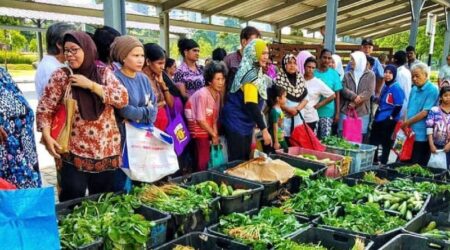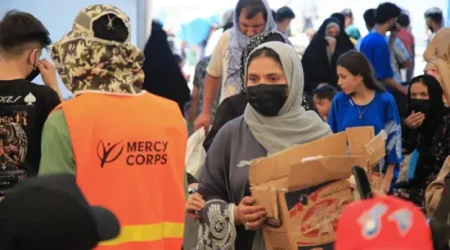Coronavirus: Filipinos go hungry amid rising pork prices, inflation and job losses

Reuters
Jen Armado, a 32-year-old mother of two, was supposed to mark her 10th year as a secretary in a private school in Tanza, Cavite, a coastal town south of Metro Manila, when she was laid off in August.
While troubled and downtrodden, Armado quickly thought of a way to recoup the lost income. “I don’t have a laptop or even broadband internet to apply for a remote job. Good thing I love cooking, so I sold home-cooked meals instead,” she said.
Her main delicacies were lumpiang shanghai (the Philippine version of spring rolls), and embutido, Filipinos’ take on American meat loaf. Using her smartphone, she took photos of her creations and posted them on Facebook with price tags of 80 pesos (around S$2.21) per meal.
To make the most of her little capital, she prepared food using a makeshift wood stove by her front yard so she needn’t buy gas, which costs US$20 per tank.
“I can say [the meals] were a hit,” she said. “I was even able to buy a bike for my four-year-old daughter on her birthday from my earnings, and it was enough for our household expenses until my husband found a job last year.”
But her budget tricks were no match for the rising price of pork. “I sold these meals till November, but after that, I had to pause since the price of pork started to rise,” she said.
Armado’s story resonates with millions of Filipinos scrambling to cope with the health and economic crises caused by the coronavirus pandemic. At least 4.5 million Filipinos were unemployed last year, a 15-year high, according to the Philippine Statistics Authority.
On top of that, consumer prices are rising. Inflation in the country hit 4.7 per cent in February, the quickest pace in two years. The uptick was driven by higher prices of non-alcoholic drinks and food, particularly meat, which rose by 20.7 per cent.
African swine fever, first reported in Philippine farms in 2019, has been rampant throughout the pandemic, decimating supplies of local hog farmers. By late last year, pork belly prices had doubled to US$8 (S$11) – US$9 per kilogram. The government’s move to place a 60-day price ceiling on pork in February did little to temper prices.
Pork is a staple in Filipino meals and much of the country relies on local hog farmers, even though the country is one of the world’s top importers of pork (seventh-largest before the pandemic).
Vegetables and fruits are also become relatively expensive, with crops having been hit by typhoons late last year.
“The Philippines is the only nation in the region to be battling inflation at this moment, and ironically is also the country posting the worst GDP numbers,” Nicholas Mapa, senior economist of ING Philippines, said. Its GDP plunged 9.5 per cent in 2020.
Mapa said while other Southeast Asian economies were struggling, their inflation rates remained low due to weak consumer demand.
While Vietnam and Indonesia also faced hog supply problems last year due to African swine flu, the problem was less acute. Pork is not as big a part of the Indonesian diet while Vietnam increased imports.
“The Philippines is indeed facing a double whammy and must double efforts to alleviate supply-side pressure on inflation as higher prices will multiply roadblocks to the recovery efforts,” Mapa said.
Going hungry
Minimum wage workers are among those most affected by rising prices.
JP Taip, a 28-year-old crew member at a weekend food bazaar in Metro Manila, juggles two part-time jobs just to feed his seven-year-old son.
“I used to be a full-time messenger in a small firm supplying fire safety equipment, but since they downsized last year, I was let go,” he said. “Now I work part-time in this weekend bazaar. Then on weekdays, I occasionally serve in a local bar.”
Taip is paid on a daily basis for both gigs based on the minimum wage, which is 537 pesos (US$12). As the weekend gig is his only regular job, his salary barely covers his monthly expenses that include the lease for his home, transport, and food. “My son and I have opted to eat mostly eggs and veggies for now,” he said. “We don’t eat much meat any more.”
Even for those fully employed, money difficulties remain. Jenny, an administrative worker at a resort in Pampanga, a three-hour drive north of Metro Manila, said saving had become more challenging. Her pay is 50 per cent higher than the minimum wage, but rising prices of groceries have stung.
“Before the pandemic, my 2,000 pesos could tide me over the month in terms of groceries. Now, it’s barely enough for canned goods and frozen goods to last a month. I can’t even include laundry soap with that budget,” she said.
The 21-year-old has stopped visiting her local cafe before work, opting for instant coffee prepared at home instead.
“I’ve even cut off the expenses that I don’t really need, like buying the merchandise of my favourite K-pop bands,” said Jenny, a fan of the boy band Seventeen.
Yet Jenny still can’t save her target of 10,000 pesos a month – something she did with ease before. “Now, I can barely keep 5,000 pesos a month,” she said.
With inflation expected to continue into the third quarter, Filipinos’ spending capacity is likely to remain limited.
One labour group is calling for a 100 peso (US$2) increase in the minimum daily wage nationwide.
In February, Defend Jobs Philippines filed a petition with the wages and productivity commission. Its spokesman Christian Lloyd Magsoy said the issue was a matter of “life and death”.
In its five-page petition, the group cited research by local think tank IBON Foundation that found the current minimum wage was its lowest in real terms in eight years.
Economists are split on how to respond. Some argue higher wages will boost consumption, but others fear this could stoke inflation and put pressure on struggling employers.
Carlo Asuncion, chief economist of Unionbank of the Philippines, said businesses were “still reeling from the pandemic and wage adjustments, so at this point it is a very difficult discussion to have”.
However, Robert Dan Roces, chief economist of the Security Bank of the Philippines, said: “If kept in pace with inflation and balanced with the goals of economic recovery, raising the minimum wage will have a minimal effect.”












Comments (2)
On some website I have already read almost the same selection of disk imaging, but thanks anyway.
Today, I went to the beach with my kids. I found a sea shell and
gave it to my 4 year old daughter and said “You can hear the ocean if you put this to your ear.” She placed the shell to her ear and screamed.
There was a hermit crab inside and it pinched her ear.
She never wants to go back! LoL I know this is totally off topic but I
had to tell someone!